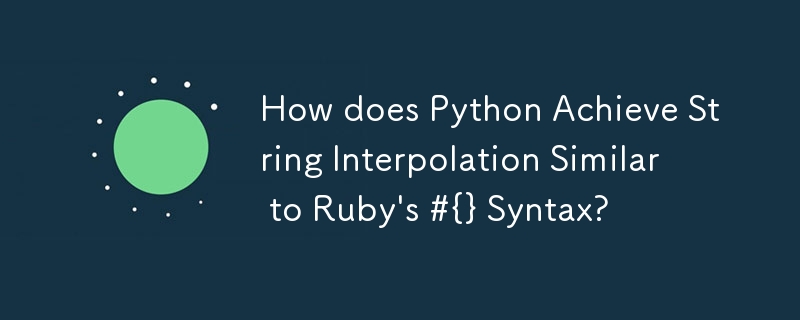

Ruby では、文字列補間は #{} 構文を使用して実現されます。例:
name = "Spongebob Squarepants"
puts "Who lives in a Pineapple under the sea? \n#{name}."質問: Python には文字列を補間するための同等のメカニズムはありますか?
回答:
Python 3.6 以降、Ruby の #{} 補間に似た文字列補間構文が導入されました。 Python 3.6 以降では、f-strings 構文を使用して、次のように式を文字列に埋め込むことができます。
name = "Spongebob Squarepants"
print(f"Who lives in a Pineapple under the sea? {name}.")Python 3.6 より前は、文字列補間に % 演算子が一般的に使用されていました。最初のオペランドは補間される文字列であり、2 番目のオペランドはフィールド名を補間される値に関連付ける「マッピング」にすることができます。
Python の .format() メソッドを使用して文字列補間を実現するには:
name = "Spongebob Squarepants"
print("Who lives in a Pineapple under the sea? {name!s}.".format(**locals()))最後に、string.Template クラスは別のアプローチを提供します。
tmpl = string.Template("Who lives in a Pineapple under the sea? $name.")
print(tmpl.substitute(name="Spongebob Squarepants"))以上がPython はどのようにして Ruby の #{} 構文に似た文字列補間を実現するのでしょうか?の詳細内容です。詳細については、PHP 中国語 Web サイトの他の関連記事を参照してください。